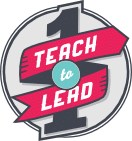Self-control is a difficult principle for anyone to learn, especially at-risk teens. Knowing the difference between intentionally responding to difficult situations rather than reacting out of emotion is a skill that can help students avoid a lot of problems both now and later on in life.
Unfortunately, many of the at-risk teens going through the Teach One to Lead One Mentoring Program don’t grow up in environments where self-control is modeled. They are surrounded by family or friends that tend to react to conflict and peer pressure rather than craft a thoughtful response.
Therefore, it’s our goal at Teach One to Lead One to look for ways to show them what it means to exercise self-control in difficult situations.
What at-risk students can learn about self-control from Mr. Miagi
One of the greatest examples of what it looks like to exercise-self control comes from the 80’s classic, Karate Kid II. If you grew up in the 80’s, you remember the classic scenes and wise sayings of Mr. Miagi as he worked with Daniel to learn about life through karate.
Here’s a classic scene from the movie that many of our mentors use to teach their students what it means to live with self-control:
From the clip, here are a few things our student learn about self-control from Mr. Miagi:
- Self-control takes a different kind of strength. Everyone knows that Mr. Miagi had the physical strength and skills to step in and take down the bully… But he didn’t. The strength of self-control is having the mental power to resist any temptation.. When it comes to mental strength, we want students to learn that you have to prepare yourself before the temptation arises.
- Self-control takes time to develop. There’s a reason senseis always have grey hair… It takes a lifetime to develop that kind of wisdom and self-control. In the same way, the discipline of self-control takes time to learn. Mr. Miagi didn’t learn his karate skills in a week… it was built on practicing over and over again. Developing self- control is the same thing. It takes practice.
- Self-control is choosing to respond, rather than react. It‘s easy to react in a situation. But when we react, you let other people control you. When you learn to think about things and respond, you stay in control of yourself and the situation. Mr. Miagi teaches our students that if they can learn to respond instead of react, their life will be MUCH better and they will be able to lead others.
Self-control is a strength, not a weakness. When we take the time to teach students the difference between responding and reacting to situations, they begin to learn that developing self-control actually helps keep them in control of the situation.
Mentors: What are some other examples you use to help students learn the value of self-control?



